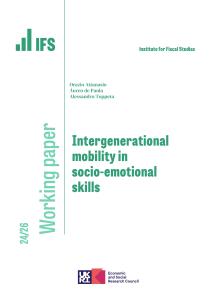<p>Targeted government investment has improved the educational outcomes for secondary school pupils in disadvantaged areas, according to new economic research by Stephen Machin, Sandra McNally and Costas Meghir. The study, which evaluates the Excellence in Cities (EiC) programme shows that the most disadvantaged schools benefit and that the effect is mainly concentrated among pupils of medium to high prior achievement. Initial estimates suggest that the EiC policy could prove to be cost-effective, particularly if targeted where it is most effective, namely in the most disadvantaged schools. </p><p> </p><p>EiC has been implemented in around one third of secondary schools in England and consists of three core strands: </p><p> </p><p><ul><li>Learning Mentors, to help students overcome educational or behaviour problems;<li>Learning Support Units, to provide short-term teaching and support programmes for difficult students;<li>a Gifted and Talented programme, to provide extra support for 5-10 per cent of pupils in each school.</ul> </p><p> </p><p>Other aspects of the EiC policy are the designation of particular schools as Specialist (i.e. in particular subjects) or Beacon (to disseminate good practice to other schools). </p><p>The study evaluates the average impact of EiC on educational attainment and attendance at school over time since its introduction in 1999. This is done by assessing the extent to which the whole range of activities carried out as a result of EiC funding led to an improvement in important educational outcomes. The focus is on pupil-level attainment at age 14 (the end of Key Stage 3) and a measure of school attendance (the percentage of half days missed).</p>










